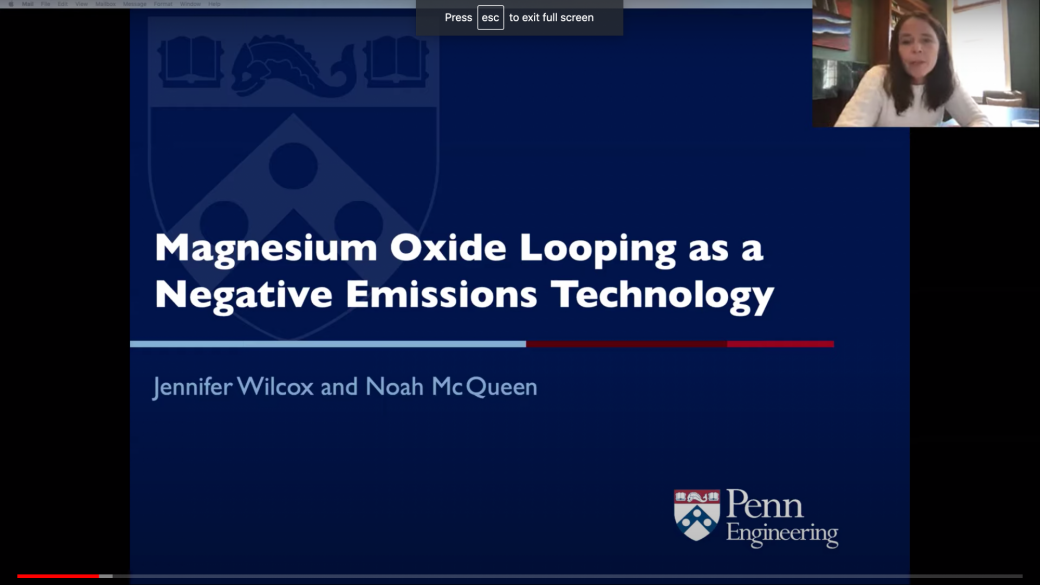As the atmospheric concentration of carbon dioxide (CO2) continues to rise, it is imperative that we develop technologies that not only mitigate CO2 emissions, but also remove CO2 directly from the atmosphere. There are a variety of approaches that are being developed to do just this, and many approaches will be required to achieve a meaningful scale to mitigate climate change. In our work, we have been developing a novel, land-based magnesium oxide looping process to capture CO2 from the air. The process takes in magnesium carbonate (MgCO3) and calcines the material at high temperatures (roughly 600 – 900ºC) to produce amorphous MgO. The produced MgO is subsequently spread out over land to carbonate for a year. Following carbonation, the mineral is recollected and recalcined to reproduce MgO and a high purity stream of CO2. The MgO can then be spread out over the land to carbonate again. The resulting CO2 may be compressed and stored geologically or otherwise utilized. This carbon removal approach demonstrates the potential for high impact, low cost carbon removal.
Preliminary experiments were performed to corroborate the experimental uptake rate of CO2 onto MgO. Additional laboratory experiments will focus on the effect of the ambient reaction conditions on the overall kinetic rate. Further, we have planned experiments for a small pilot test at the Pennovation center. This will use 1 m by 1 m containers of MgO to determine the viability of the process in open, realistic ambient conditions, as well as the impact of different experimental parameters on the reaction rate (including bed depth, particle size distribution and material vendor). These parameters will help us optimize the MgO looping process and determine the potential impact as a carbon removal approach.
In collaboration with the Kleinman Center for Energy Policy



